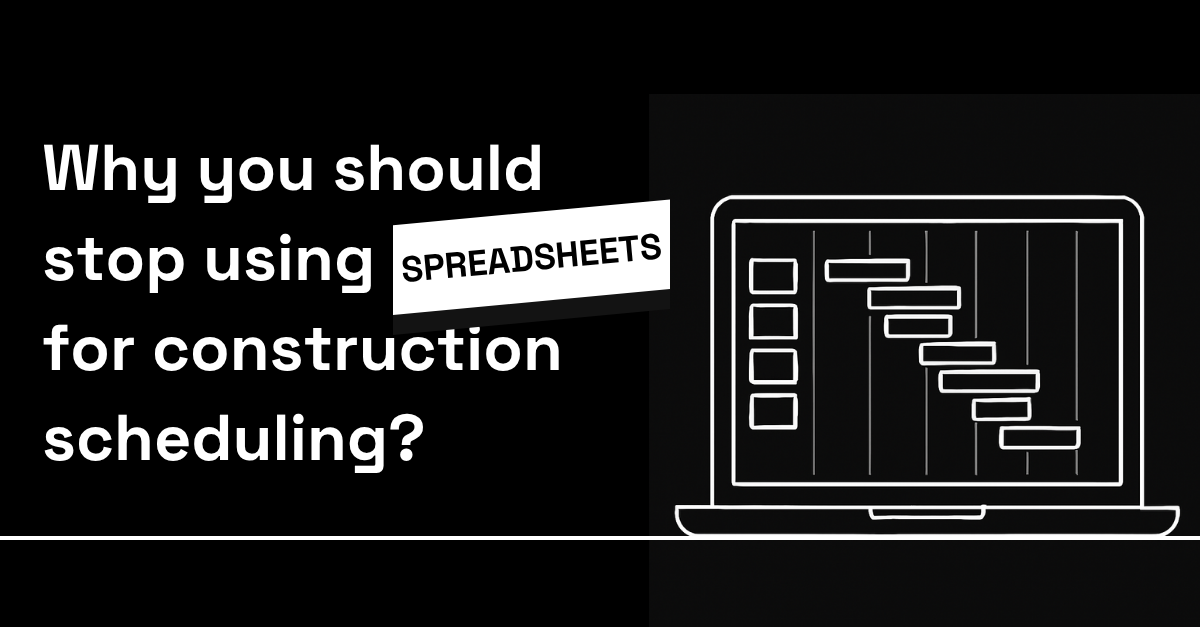Are You Still Using Excels to Schedule Your Construction Projects? Stop Now

If you’re still using excel (or any spreadsheet) to schedule and manage construction production, you’re likely dealing with delays, miscommunication, surprises, and endless manual updates.
Here’s why you, too, should stop using spreadsheets.
1. Excel isn’t built for dynamic scheduling
As much as we’d like them to be, construction schedules are never static. Delays, material shortages, subcontractor availability, and unpredictable weather constantly shift timelines.
Sure, you can create a beautiful schedule in spreadsheet — but updating it is manual, tedious, and a waste of time. When delays happen (and trust us, they always do), you must manually shift everything. Every change triggers a ripple effect of adjustments, making it nearly impossible to maintain an accurate, up-to-date view of the project.
2. No real-time collaboration
Construction requires seamless coordination between contractors, site managers, subcontractors, and suppliers. Spreadsheets don't support real-time collaboration, leaving teams working with conflicting versions of the same schedule.
This results in:
- Crews working with outdated information
- Costly rework and unexpected delays
- Lack of visibility into project progress
- Missed deadlines due to disconnected task assignments
- Manual errors that multiply as schedules grow
3. Excels don't provide a visual, location-based plan
Nordic countries lead in industrialised construction because they use location-based scheduling, ensuring tasks are balanced around actual building areas.
In a spreadsheet, you can’t see which spaces are underutilised or empty for long periods.
A modern construction tool helps you:
✅ Identify and eliminate wasted time in empty spaces
✅ Adjust schedules dynamically to optimise workflows
✅ Compress project timelines by making smarter sequencing decisions
Without a visual, location-based scheduling system, excels keep you blind to hidden inefficiencies that slow down construction projects.
The right tool combines scheduling, management, and execution in one
With spreadsheets, you’re stuck firefighting issues that shouldn’t exist. Instead, you need a construction production management system that integrates:
✅ Gantt scheduling for project-wide planning
✅ Takt scheduling for workflow optimisation
✅ Line of Balance for tracking work across repeating locations
✅ One data source — multiple views, one truthful production schedule
✅ Real-time execution tracking to keep everything updated
✅ Flexible access and views for all stakeholders, including subcontractors

Stop managing construction with spreadsheets — Upgrade to Production Management
Spreadsheet tools are great for budgets, but they are not built for on-site production planning and management.
To stay competitive, contractors need dynamic, real-time scheduling software that adapts to the realities on-site.
Ready to move to the next level?

Get a demo of Sitedrive
Get a demo of Sitedrive and see how it helps you schedule and manage the production on your site better than a spreadsheet ever could.



